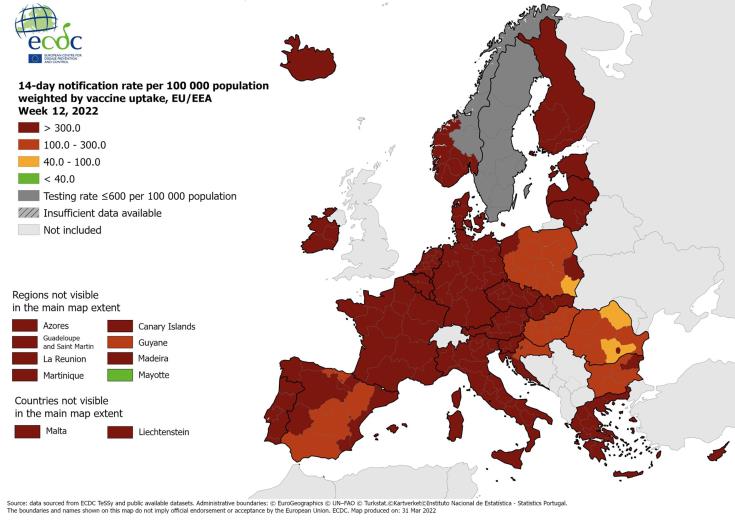The spread of COVID-19 in eastern Europe as well as Spain has slowed down further the past week, according to the latest epidemiological map issued by the European Centre for Disease Prevention and Control (ECDC) on Thursday.
Most regions and countries in the European Union and the European Economic Area (EEA), including Cyprus, remain in the “deep red” category, the highest defined category for recording the spread of COVID-19.
Sweden and a significant part of Norway have been marked grey on the map since there have been less than 600 tests per 100 thousand inhabitants in these areas during the last 14 days.
The province of Subcarpathia in south-eastern Poland is for one more week one of the few areas in Europe that fall under the orange category. The epidemiological situation has also improved in most of Poland, which has passed from the deep red into the red category.
The situation continues to improve also in Romania, with some regions in the east passing into the orange category, while the rest of the country is now in the red category. The capital Bucharest is the only area in the country which is still in the deep red category.
In Bulgaria, most regions are now in the red category with the exception of a region in the northeast of the country. The situation remains unchanged in Hungary, which remains in the red category, as well as Croatia, where eastern regions are in the red category while the west along with the capital Zagreb remain in the deep red category.
The situation appears to have improved also slightly in Spain. However, Portugal and Belgium are back in the deep red category in their entirety after showing positive signs last week. The Aosta Valley region in north-western Italy is also back in the deep red category.
The overseas French territory of French Guyana in South America remains in the red category. Meanwhile, the French overseas territory of Mayotte in the Indian Ocean remains in the “green”, that is safest, category.
The map is a tool for providing updated information to local authorities and citizens on the epidemiological situation on a local level, in order to facilitate the imposition of restrictive measures and inform citizen decisions on travelling.
The ECDC map records the notification rate for COVID-19 over the past 14 days per 100 thousand people in every region of the EU/EEA countries, weighted by vaccine uptake in each region.
The ECDC map does not record the number of deaths or hospitalisations. The map also does not account for the percentage of total cases caused by the Omicron variant.
According to the ECDC’s guidelines, regions where the 14-day notification rate per 100 thousand population, weighted by vaccine uptake, is less than 40 fall into the “green” category, regions where the rate is less than 100 but 40 or more fall into the “orange” category, regions where the rate is less than 300 but 100 or more fall into the “red” category, and regions where the rate is 300 or more fall into the “dark red” category.
ECDC publishes relevant maps and data every Thursday, in support of the Council recommendation on a coordinated approach to the restriction of free movement in response to the COVID-19 pandemic. The latest revision of the Council Recommendation was adopted by EU Member States on 25 January 2022 and came into effect on 1 February 2022.
The maps are based on data reported by the Member States to the European Surveillance System (TESSy) by midnight on Tuesday.
(CNA)






